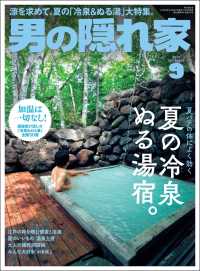- ホーム
- > 洋書
- > 英文書
- > History / World
基本説明
Beautifully translated by Richard H. Minear, these honest and moving essays are a fresh look at the history of Japan during the Asia-Pacific War.
Full Description
Takeyama Michio, the author of Harp of Burma, was thirty-seven in 1941, the year of the Japanese attack on Pearl Harbor. Husband, father of children born during the war, and teacher at Japan's elite school of higher education in Tokyo, he experienced the war on its home front. His essays provide us with a personal record of the bombing of Tokyo, the shortage of food, the inability to get accurate information about the war, the frictions between civilians and military and between his elite students and other civilians, the mobilization of students into factory jobs and the military, and the relocation of civilians out of the Tokyo area. This intimate account of the "scars of war," including personal anecdotes from Takeyama's students and family, is one of very few histories from this unique vantage point. Takeyama's writings educate readers about how the war affected ordinary Japanese and convey his thoughts about Japan's ally Germany, the Tokyo War Crimes Trial, and the immediate postwar years. Beautifully translated by Richard H. Minear, these honest and moving essays are a fresh look at the history of Japan during the Asia-Pacific War.
Contents
Introduction: Takeyama Michio, 1904-1981, by Richard H. Minear
The Writings
Part I: The War
Ichiko in 1944 (1946)
The End of the War (1953)
White Pine and Rose (1947)
Scars (1949)
Part II: Crisis and Challenge
Germany—New Middle Ages? (1940)
The Younger Generation (1945)
Part III: The Tokyo Trial
The Trial of Mr. Hyde (1946)
Letter to Judge Röling (1949)
Part IV: Turn to the Right
The Student Incident: Observations and Reflections (1950)
Those Who Refuse to Enter the Gate—Thoughts on One Contemporary Frame of Mind (1951)





![Comic REX(コミック レックス) 2016年5月号[雑誌]](../images/goods/ar2/web/eimgdata/EK-0320372.jpg)


